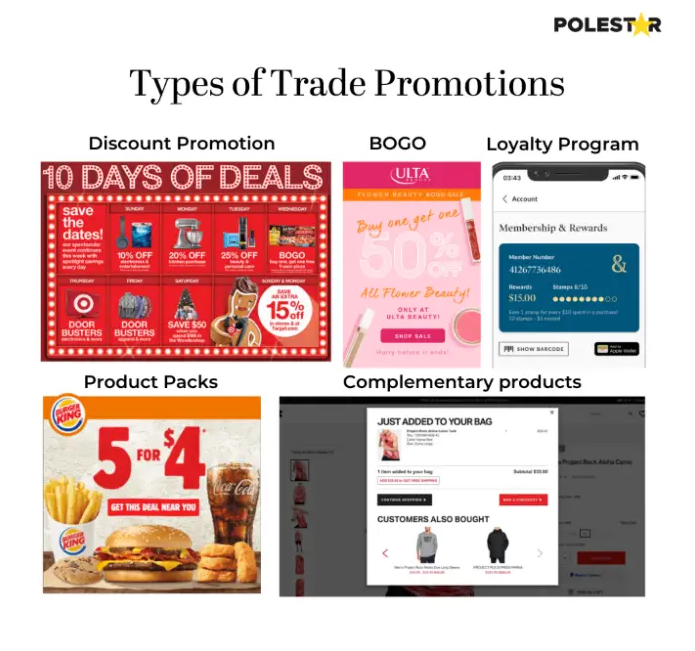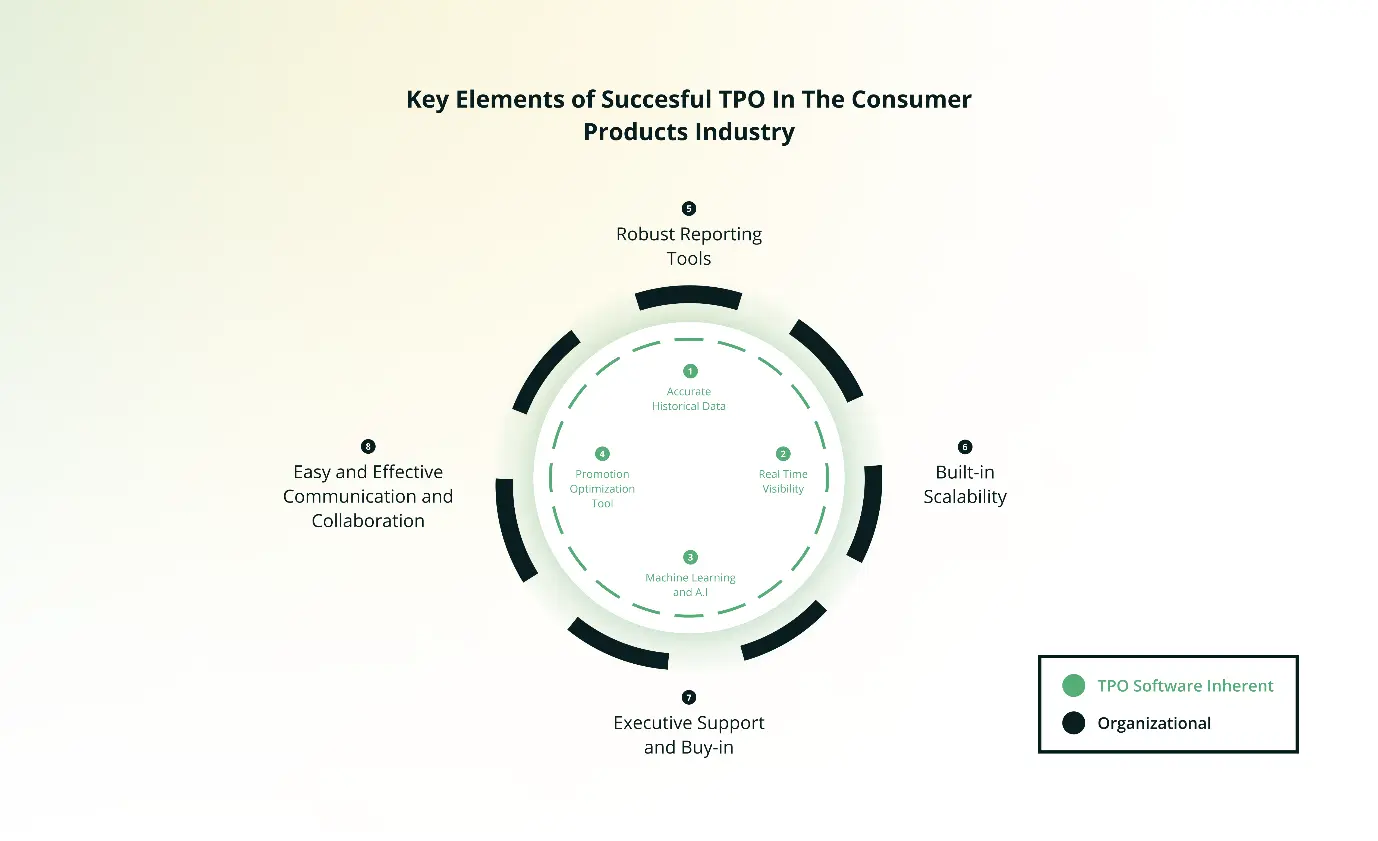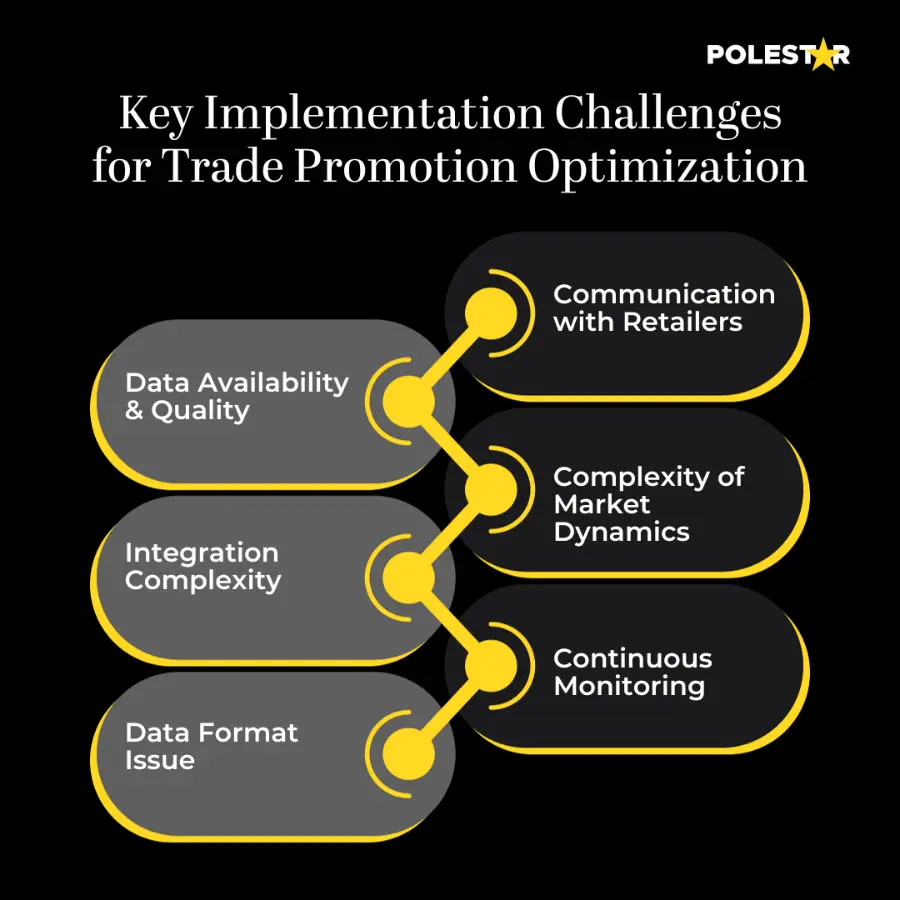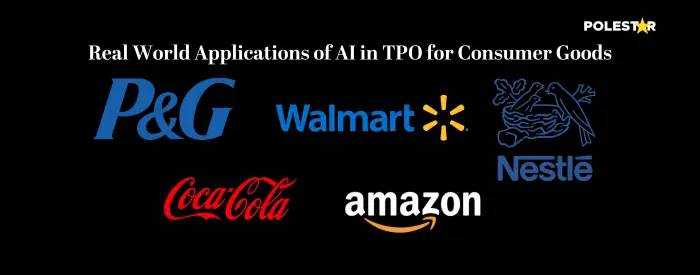
Sign up to receive latest insights & updates in technology, AI & data analytics, data science, & innovations from Polestar Analytics.
Editor’s Note - Data silos, fragmented insights, and gut-feeling strategies hold you back from maximizing ROI. But fear not, data-driven leaders! This blog throws light on the secret weapon - AI and advanced analytics for trade promotion optimization. From decoding marketing complexities to addressing data integration hurdles, it offers insights into real-world AI applications at CPG industry leaders like Procter & Gamble and Coca-Cola. Join us to see the need of the trade promotion management analytics.
Nielsen Holdings highlights that 40% of trade promotion spending in the Consumer-Packaged Goods (CPG) realm falls short of achieving the intended results.
On a day-to-day basis, decision makers in the industry grapple with a myriad of inquiries, such as
In the Consumer Goods industry, tackling the 5Ps of marketing feels like cracking a code. Achieving 360-degree data-driven decision-making sounds good, but it's almost Mission Impossible.
Trade Promotion spending is a significant deal, a cash cow for companies. However, manufacturers struggle to crack the code for the best ROI, relying on past experiences, gut feelings, and incomplete intel.
Challenges abound – from fragmented data systems to dealing with subpar analytics software. The silver lining? Enter Artificial Intelligence, Big Data, and their superhero squad, turning things around by helping us leverage data like never before. It's like having a trade promotion superhero pinpoint optimal resources for high-yield promotions.
In a nutshell, this blog explores Trade Promotion Optimization (TPO) solutions, discussing hurdles, struggles, and how AI serves as the hero to tackle these challenges head-on. Stay tuned!
Say goodbye to trade promotion headaches: Get our easy-to-follow framework and best practices,
In the Consumer-Packaged Goods (CPG) industry, "trade" denotes the interaction between manufacturers and retailers. Trade promotion encompasses the collective marketing strategies implemented in stores to boost product demand. Various factors, including pricing, display fixtures, value-added bonuses, and more, are considered in trade promotion efforts.
According to Deloitte, Organisations spend an average of 7-10% of their gross sales on trade promotion

Trade Promotion Optimization (TPO) involves analysing historical performance to formulate models that can predict future outcomes. TPO revolves around identifying the optimal combination for each product, region, and SKU, with the aim of creating promotions that maximize volume, sales, profit, and various other crucial parameters, all within a specified budget constraint.
Supercharge Your ROI: Get started with advanced analytics for trade promotions today,

Source: CPG Vision
Now, let's talk about Trade Promotion Management (TPM). Unlike TPO, TPM zooms in on the nitty-gritty of internal execution and operational aspects of trade promotions. This involves divvying up budgets for various stages in different departments, overseeing retail activities, keeping tabs on funds, giving the green light for payments, and more. It's basically the behind-the-scenes operation to ensure everything runs smoothly in the world of trade promotions.
Supercharge Your ROI: Get started with advanced analytics for trade promotions today, Click here
According to a recent survey by the Promo Optimization Institute, over 65% of retailers face challenges in integrating trade promotions with other retail execution domains. This results in a lack of alignment with pricing, supply chain, and assortment management policies.
The aim of trade promotion optimization is to bridge these gaps, emphasizing the need for seamless coordination across different aspects of a retailer's operations for enhanced effectiveness.

Data Availability & Quality: TPO relies on accurate data from various sources, but organizations often face inconsistencies and gaps, impacting algorithm effectiveness.
Data Format Issue: Decision-makers still use limited tools like spreadsheets, complicating data access and integration into workflows.
Dependence on skilled personnel: Business users often rely heavily on IT or MIS teams for daily data access and customized reports, lacking the ability to independently update dashboards.
Missing what-if analysis: Many trade promotion strategies require forecasting and predicting the impact of specific actions, such as running a BOGO promotion for a cash cow. However, numerous tools lack in-depth analysis, offering generic insights that don't provide tangible business value.
Incomplete insights for new plans: Organizations face challenges in measuring trade promotion effectiveness due to insufficient data and ineffective predictive intelligence. This results in a lack of data-backed optimization, with decision-makers relying on past experiences or partial intelligence.
Integration complexity: Integrating TPO systems with existing IT infrastructure can be complex, hindering effective optimization
Market dynamics complexity: TPO solutions must be flexible to adapt to dynamic markets with changing consumer preferences, competition, and economic conditions.
Retailer communication challenges: Collaborating with retailers requires effective communication, data sharing, and negotiation, adding complexity to optimized promotion plans.
Continuous monitoring and improvement: TPO require ongoing monitoring and refinement to adapt to changing market conditions for long-term success.
While we've examined the challenges of implementing Trade Promotion Optimization, have you considered how to overcome them and why AI could be the secret weapon? Let's explore further.
Explore the intricate dynamics among key stakeholders—CEO, CMO, CSCO, and Sales Head—as they navigate the complexities of trade promotions.
Get Your CopyBoth manufacturers and retailers agree that many promotions are ineffective. This has gone on for decades and spending on promotions has increased over time
1. Gathers data from various sources for CPG Analytics : For instance, a leading beverage company aiming to optimize trade promotions for its new energy drink line needs a solution that pulls in data from diverse consumer touchpoints. This includes sales data from retail partners, customer feedback on social media, and market trends from industry reports. By integrating information from these sources, the company can create a more accurate and targeted trade promotion strategy, ensuring the success of its promotions in a competitive market.

Source - Acuvate
2. Collecting Digital Data: In the consumer goods industry, with the rise of digital marketing, it's crucial to track consumer sentiment on platforms like Twitter and Facebook. Traditional Trade Promotion Optimization (TPO) solutions often miss this real-time, unstructured data. When choosing a vendor, prioritize those who effectively capture and utilize digital data. Additionally, TPO faces challenges with fragmented data residing in siloed systems such as POS, syndicated data, and digital marketing campaign data. An ideal TPO solution should provide a unified view, offering a single window for convenient access to diverse data types and reports.
3. Forecasting CPG Sales: An ideal TPO solution must predict revenue, profits, and costs for different promotion offers by merging internal data sources (past sales, promotions, campaigns) with external data from providers like Nielsen, Kantar, IMS, and additional sources like weather, events, and social media.
4. Recommending Trade Promotions: For CPG Analytics, a robust TPO solution should optimize promotions based on forecasted combinations. It should recommend promotions considering constraints like regional budgets and objectives such as volume increase or market share gain. The planner should be able to simulate scenarios, selecting the best one by predicting sales uplift and profit. For instance, it might suggest running a BOGO promotion in a specific region to maximize revenue within a defined budget.
5. Post-Event Analysis Automation: Post-promotion analysis is a vital aspect of TPO solutions, yet most lack automation, leading to manual data compilation and burdening field sales teams.
According to POI research, only 39% of CG companies incorporate some level of automation in their TPO solutions.
Don't Miss Out on 20% ROI Growth: CPG data analytics fuels explosive sales.
Learn More
Procter & Gamble (P&G):
Global consumer goods giant P&G utilizes AI, employing machine learning to analyze extensive historical sales and promotional data. This approach helps P&G identify effective promotions for different products and regions, leading to more informed decisions, resource optimization, and improved sales outcomes.
Nestlé:
The company employs AI to optimize trade promotions by analyzing sales data, market trends, and external factors impacting consumer behavior. This results in more accurate demand predictions, improved inventory management, and optimized promotion strategies, ultimately enhancing promotion effectiveness and reducing unnecessary costs.
Walmart:
Retail leader Walmart uses AI for dynamic pricing and promotions across its stores. Machine learning algorithms analyze historical sales, competitor pricing, and market trends, allowing Walmart to offer competitive prices in real time while maximizing revenue. This dynamic pricing strategy, powered by trade promotion optimization machine learning, helps Walmart maintain its position as a price leader in the retail industry.
Amazon:
E-commerce pioneer Amazon employs AI to personalize promotions using recommendation algorithms. By analysing customer behaviours, Amazon tailors product suggestions to individuals and optimizes pricing strategies dynamically in response to market changes. This enhances customer experience and drives higher sales volumes.
Coca-Cola:
Beverage giant Coca-Cola utilizes AI to optimize trade promotion strategies, analysing sales data, historical outcomes, and external factors like weather patterns. This AI-driven approach allows Coca-Cola to tailor promotions for maximum impact, improving demand forecasting accuracy and enhancing overall promotion effectiveness.
In the Consumer-Packaged Goods (CPG) industry, effective Trade Promotion Optimization (TPO) is essential for sustainable growth. Polestar Analytics, as a reliable partner, offers an enterprise-grade Trade Promotions Management (TPM) tool in the CPG industry with SKU/customer-level granularity and advanced baseline models.
With a successful track record of implementing analytics for 50+ CPG brands, Polestar utilizes sophisticated machine-learning algorithms to simulate the incremental impact of trade promotion initiatives.
For those seeking to enhance the effectiveness of trade spend without unnecessary complexities, get expert advice.
Our solution prioritizes harmonizing human insights with machine-driven optimization, fostering a strategic and sustainable approach to trade promotion strategies in the CPG industry.

About Author

Marketing Consultant
Data Alchemy can give decision making the golden touch.